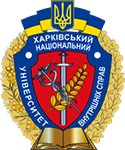Forensic classification of narcotic drugs
Abstract
The development of means and methods for preventing and combating drug-related crime depends on an understanding of trends in the illicit drug market. This requires the use of a forensic classification of the relevant substances. Currently, there are significant gaps in this issue due to the use of different approaches to its construction, which causes difficulties in conducting scientific research and in practical activities aimed at solving and investigating criminal offences.
The article proposes the author’s own approach to the forensic classification of narcotic drugs and psychotropic substances, which consists in their division depending on the legal status, source of origin and method of manufacture, nature of their effect on the human body, form of manufacture and morphological characteristics. According to their legal status, drugs should be divided into those whose circulation is prohibited; those whose circulation is restricted; temporarily not prohibited especially dangerous drugs; and precursors. They are identified by their official and chemical names. Depending on the source of origin, vegetable and synthetic drugs are distinguished, and taking into account the method of manufacture as an additional criterion, substances of vegetable origin should be divided into natural and semi-synthetic. In these groups, it is important to use generic names that describe the source of the drug, systematising natural and semi-synthetic drugs depending on the natural source of the main substance (alkaloid), and synthetic drugs – on the corresponding chemical compound.
The classification of drugs by other criteria is somewhat arbitrary, as certain substances may have different properties. Therefore, for forensic purposes, the most common features in the respective groups are sufficient. Psychostimulants, narcotic analgesics, depressants and hallucinogens are distinguished by the nature of their effects on the body; pharmaceutical drugs with narcotic effects and street drugs are distinguished by the form of manufacture; plants, mushrooms, pills, capsules, powders and crystals, liquids, etc. are distinguished by morphological characteristics; and drugs intended for smoking, inhalation, oral administration, injection are distinguished by the method of use.
Downloads
References
Stepaniuk, R., & Lozova, S. (2023, November 10). Some trends in the illicit drug market in Ukraine during the war [Conference presentation abstract]. International Scientific and Practical Conference “Current issues of forensics and forensics”, Kharkiv, Ukraine.
Balon, Yu. H., Simurov, O. V., Samson, O. Ya., & Isak, O. D. (2015). Chemistry of narcotic substances and drug addiction. Scientific Notes of Ternopil Volodymyr Hnatiuk National Pedagogical University, 22, 29–35.
Kalant, H. (2010). Drug classification: science, politics, both or neither? Addiction, 105(7), 1146–1149.
Poliah, A. M. (2009). Criminalistics and bases of investigation of smuggling of narcotic drugs, psychotropic substances, their analogues or precursors [Candidate thesis, Yaroslav Mudryi National Law University].
Chernetska, O. A., & Pyrih, I. V. (2016). Theory and practice of investigation of illegal transportation of narcotic drugs by rail. Lira LTD.
Kosmina, N. M. (2011). The use of special knowledge in the investigation of crimes related to drug trafficking [Candidate thesis, Kharkiv National University of Internal Affairs].
Korniienko, M. V. (2021). Some aspects of criminal characteristics of crimes in the field of illegal trafficking in narcotic drugs, psychotropic substances, their analogy. Juridical Scientific and Electronic Journal, 11, 697–700. https://doi.org/10.32782/2524-0374/2021-11/176.
Lee, J. P., & Antin, T. M. J. (2011). How Do Researchers Categorize Drugs, and How Do Drug Users Categorize Them? Contemporary Drug Problems, 38(3), 387–427. https://doi.org/10.1177/009145091103800304.
Houck, M. M., & Siegel, J. A. (2015). Fundamentals of Forensic Science (3rd ed.). Academic Press. https://doi.org/10.1016/B978-0-12-800037-3.00013-3.
Lozova, S. M., & Perlin, S. I. (2023). Preparation of objects for the examination of narcotic drugs, psychotropic substances, their analogues and precursors: a case study approach. Bulletin of Kharkiv National University of Internal Affairs, 2(1), 225–235. https://doi.org/10.32631/v.2023.2.21.
Copyright (c) 2024 R. L. Stepaniuk, S. M. Lozova

This work is licensed under a Creative Commons Attribution 4.0 International License.



